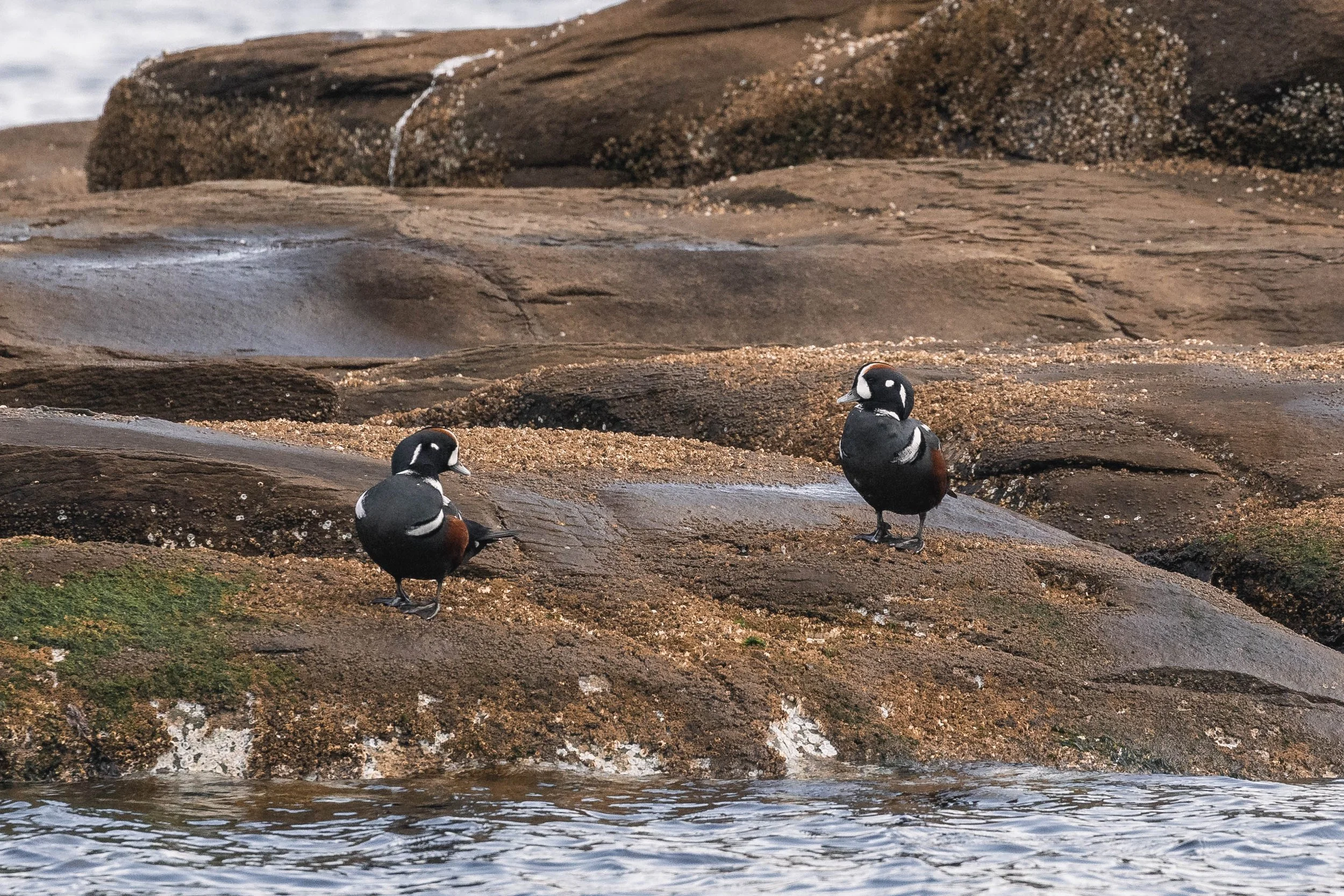October 9, 2025 - Manta, Mantis, and Sage in the Strait!
This afternoon, our vessels Kula and Keta headed out with calm seas and a gentle breeze, perfect conditions for exploring the Strait of Georgia. With the low winds, we decided to head into one of our favourite local feeding areas, a spot that’s not too far from home. Just around the corner from Gabriola Island, which we can actually see from our office, we had our first sighting of the day: the telltale plume of a humpback blow rising against the horizon!
It’s always a thrill when we spot whales so close to home. None of the whales we see are tagged or tracked, so every encounter begins with a search. Our crews rely on their eyes, teamwork, and a bit of detective work. We also use apps and online databases to record sightings and help connect the dots between what we, and others, see out on the water. It’s not always this quick to find whales, but that’s part of the adventure. When we say whales can pop up anywhere, we mean it! We’ve even seen a humpback in less than 20 feet of water, remarkable, considering these giants can reach 50 feet long themselves.
Once we spotted the blows near Gabriola, cameras came out and lenses focused on dorsal fins and flukes. These features are unique to each humpback and act much like a fingerprint, helping us identify individuals. The tail, or fluke, can span up to 20 feet across and carries distinct markings of black and white patterning, scars, and notches that tell each whale’s story.
The pair turned out to be Manta (BCZ0155) and Mantis (BCX0936), a duo we affectionately nicknamed Yin and Yang on today’s tour. Though their names sound similar, their appearances couldn’t be more opposite. Mantis belongs to our “X” whales, while Manta is listed as a “Z” whale, opposite ends of our system! We sort humpbacks by fluke colouration in our catalogue to make identification a little easier when scanning hundreds of entries. With X whales having 80% or more black, Y whales have a blend of black and white and Z whales are 80% or more white on the underside of the tail.
From their behaviour, we guessed that Manta and Mantis were feeding. They were performing long dives, surfacing for a few deep breaths, then disappearing again for several minutes at a time, classic feeding behaviour. Their circling movements also suggested they weren’t travelling but likely working a rich pocket of food below the surface.
After spending some time quietly observing the pair, we left them to enjoy their feast and continued our search. It wasn’t long before another tall blow caught our eye. This time, it was a single whale, Sage (BCX2073)! From their steady pace and direction, we could tell Sage was in travel mode, moving consistently in a straight line. Each surfacing was followed by a powerful blow before Sage gracefully dipped back beneath the waves, continuing on their way, perhaps toward the same buffet that Manta and Mantis were enjoying nearby.
On our way back, we made a quick stop at one of our favourite local haul-outs, affectionately nicknamed “Stinky Rocks.” True to its name, the air was filled with the fishy scent of Steller Sea Lions lounging along the rocks. These impressive pinnipeds can weigh up to 2800 pounds, with males boasting thick necks and loud, guttural roars that echo across the water. Sharing the rocks were plenty of harbour seals, smaller, quieter, and much more reserved than their boisterous cousins. Both species are skilled hunters, feeding mainly on fish and squid, and octopus, though they are known to take the occasional crab snack!
Overhead, our “clean-up crew” was hard at work. Gulls wheeled and called above the water, scavenging leftovers and helping keep the ecosystem balanced. We were also treated to the sight of colourful Harlequin Ducks, small, striking seabirds dressed in rich blues, chestnuts, and whites. These hardy divers thrive in the rocky, surf-swept shorelines of the coast, perfectly adapted to the dynamic conditions of the Salish Sea.
As we made our way home, the late afternoon light danced across the calm waters. Today’s tour was a perfect reminder of how lucky we are to have such incredible wildlife right on our doorstep. From feeding humpbacks just around Gabriola Island to sea lions, seals, and seabirds sharing the shore, every trip is a new chapter in the story of the Salish Sea. No two days are ever the same out here, and that’s exactly what makes every adventure so special.
Photos below taken by Marine Naturalist Cheyenne Brewster.
Mantis’ dorsal fin as they surface.
Manta going for a dive.
A fluke waterfall from Manta as they dive.
Manta’s dorsal fin as they surface.
A lovely fluke waterfall from Manta.
Manta’s dorsal fin.
The beautiful white underside of Manta’s tail.
Mantis has a lot of scarring on her tail.
Sage doing a little arch for a dive.
Sage’s dorsal fin.
The underside of Sage’s tail.
A harbour seal watching us from Stinky Rocks.
A bunch of gulls sharing the rocks with the Harbour Seals.
Harlequin ducks on the rocks as well.
Stellers Sea Lions looking unimpressed as we float by them.
Fighting amongst the large male Steller Sea Lions.
A big Roar from one of the males!

















